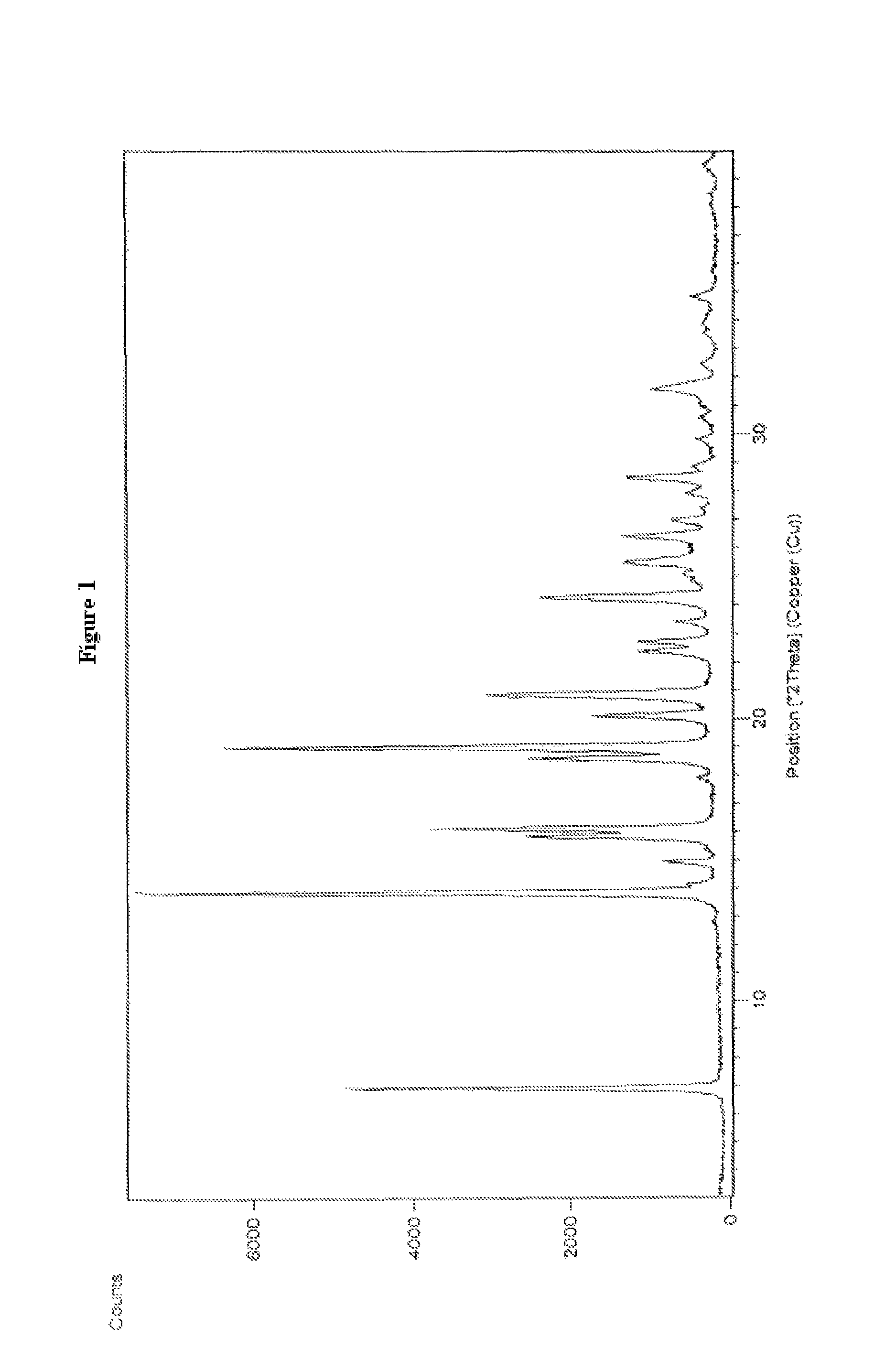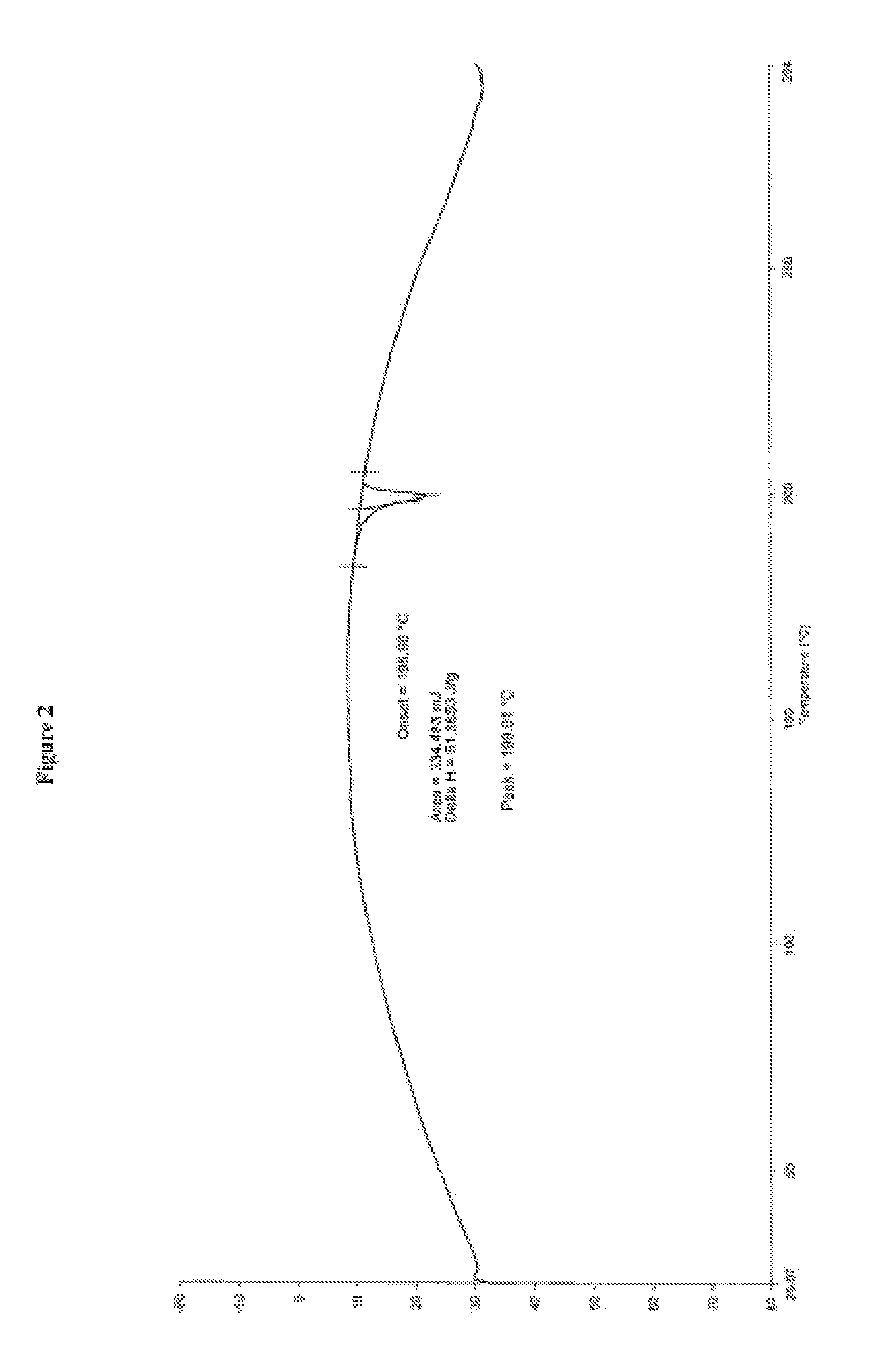Processes for the preparation of cinacalcet
a technology of cinacalcet and a process is applied in the field of preparation of cinacalcet base, which can solve the problems of limiting the practicability of cinacalcet on the industrial scale, inflammability of diisobutylaluminium hydride, and unsatisfactory commercial scale up
- Summary
- Abstract
- Description
- Claims
- Application Information
AI Technical Summary
Benefits of technology
Problems solved by technology
Method used
Image
Examples
example 1
3-chloro-N-[(1R)-1-(naphthalen-1-yl)ethyl]prop-2-en-1-amine (Formula IV)
Method A:
[0175]Potassium carbonate (161.2 g) and potassium iodide (5 g) were added to the mixture of 1,3-dichloropropene (97.3 g) and (R)-1-(1-naphthyl)ethylamine (100 g) in isopropyl alcohol (500 mL) at room temperature. The reaction mixture was refluxed at 80° C. to 85° C. for about 4 hours. After the completion of the reaction, mixture was cooled to room temperature and filtered through hyflo bed. Hyflo bed was washed with isopropyl alcohol (500 mL). The filtrate was combined and treated with hydrochloric acid (6 Normal; 100 mL) at room temperature. The solution was allowed to stir for about one hour at room temperature to give solid. The solid was filtered and was washed twice with isopropyl alcohol (2×100 mL). Methanol (750 mL) was added to the wet solid and stirred for 10-15 minutes at room temperature. The pH of solution was adjusted to 11 to 12 using a solution of sodium hydroxide in water (20%). The sol...
example 2
3-chloro-N-[(1R)-1-(naphthalen-1-yl)ethyl]prop-2-en-1-amine hydrochloride
[0182]Potassium carbonate (161.2 g) and potassium iodide (5 g) were added to a solution of (R)-1(1-naphthyl)ethylamine (100 g) and 1,3-dichloropropene (97.3 g) in acetonitrile (1 L) at room temperature. The reaction mixture was refluxed at 80° C. to 85° C. for 4 hours. After the completion of the reaction, the mixture was cooled to room temperature and de-ionized water (500 mL) was added. The solution was stirred for 15 minutes and layers were separated. The organic layer was concentrated under vacuum at 55° C. to 60° C. till about 100 to 150 mL of residue was left. Toluene (500 mL) was added to the residue and the organic layer was washed twice with de-ionized water (2×250 mL). The organic layer was concentrated under vacuum at 55° C. to 60° C. Isopropyl alcohol was added to the residue and stirred for 10 minutes at room temperature. The pH of the solution was adjusted to 0.5 to 1.0 using concentrated hydrochl...
example 3
3-(trifluoromethyl)phenyl]magnesium bromide (Formula V)
Method A:
[0185]A solution of 3-trifluoromethylbromobenzene (77.9 g) and 1,2-dibromoethane (6.9 mL) in tetrahydrofuran (250 mL) was added to a mixture of activated magnesium (18.4 g) in tetrahydrofuran (150 mL) under inert atmosphere. The reaction mixture was refluxed at 60° C. to 65° C. for about 2 hours, filtered and stored under inert atmosphere at 5° C. to 10° C. for further use.
Method B:
[0186]A solution of 3-trifluoromethylbromobenzene (151.1 g) in tetrahydrofuran (200 mL) was added to a mixture of activated magnesium (38.4 g) in tetrahydrofuran (300 mL) under inert atmosphere at reflux temperature (60° C. to 65° C.) in 1 hour. The reaction mixture was refluxed for about 1 hour. The reaction mixture was cooled to −45° C. to −40° C. and carried over to the next step.
PUM
| Property | Measurement | Unit |
|---|---|---|
| temperature | aaaaa | aaaaa |
| temperature | aaaaa | aaaaa |
| temperature | aaaaa | aaaaa |
Abstract
Description
Claims
Application Information
 Login to View More
Login to View More - R&D
- Intellectual Property
- Life Sciences
- Materials
- Tech Scout
- Unparalleled Data Quality
- Higher Quality Content
- 60% Fewer Hallucinations
Browse by: Latest US Patents, China's latest patents, Technical Efficacy Thesaurus, Application Domain, Technology Topic, Popular Technical Reports.
© 2025 PatSnap. All rights reserved.Legal|Privacy policy|Modern Slavery Act Transparency Statement|Sitemap|About US| Contact US: help@patsnap.com



